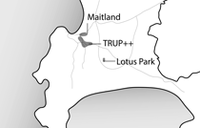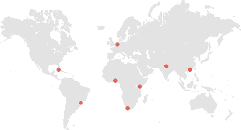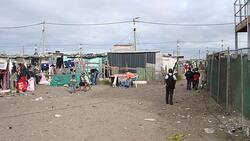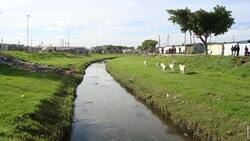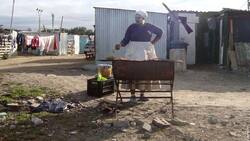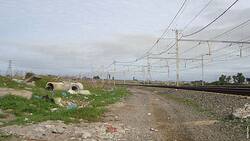Facilitating incremental growth by starting at the cluster scale
Lotus Park is a small informal settlement in Gugulethu strategically situated adjacent to the Nyanga train station on the embankment of the canalised Lotus River. Unlike most informal settlements, Lotus Park is well structured both spatially and socially. The fine grained urban fabric comprised of single story shacks facilitates pedestrian movement and displays an intricacy of nuances in public and private thresholds and appropriation of space. With unemployment at 50%, and a huge percentage of the community being children under 18 years, Lotus Park has to deal with the harsh social, economic and spatial injustices of the Apartheid era. Given the chance however, this vibrant community will embrace the opportunity to make Lotus Park their home.
Retain density and reconfigure the urban fabric
The Violence Prevention through Urban Upgrading Programme has been working with the community structures since 2010 to develop a participatory upgrading model that takes cognisance of the current residents needs and improves holistically the quality of life of residents in the area. Personal safety, security of tenure, resilience, the provision of public infrastructure, capacitation of leaders and residents and a continuous monitoring of the development are elements that the programme entails.
The Density Syndicate investigates within this process how density can contribute to the social and economic empowerment of the Lotus Park community. In comparison to other urban agglomerations, Lotus Park has a relatively high density of 220 du/ha. The goal of our group is to retain the density and to reconfigure the urban fabric by introducing housing typologies which facilitate incremental growth. This goal required us to consider three main elements:
–
1) The household and cluster level
–
2) the urban scale, and -
–
3) the financial and procedural arrangements.
By bringing these elements together, we believe that the ideas presented might hold options for a model for developing informal settlements.
Effective use of collective infrastructures
By addressing this reconfiguration on the cluster scale, the benefits of both collective financing and participation planning can be maximised. Besides the social economic advantages of renegotiating space on the cluster scale, this approach makes it possible to maximise the effective use of collective infrastructures. The notion of collective infrastructures (such as wet cores on the cluster scale) can potentially be extrapolated on the neighbourhood scale in the form of a biogas installation and productive wetlands along the Lotus River. Collective infrastructures represent an economic opportunity through reduced operational costs and potential income generation after initial investments have been regained.
Stimulate local economy
Within this framework, the renegotiation of the density of the territory and incremental development of new housing clusters represents an incredible opportunity to stimulate the local economy and facilitate empowerment. This will only succeed when combined with a long term structural support and organisational forms to manage and facilitate the process which includes a complex tenure arrangement required to ensure that people have the rights and abilities to live and improve on their homes; financial arrangements that need to be developed around the cluster and structural transformation of the settlement on a neighbourhood scale.
Participants
– Doepel Strijkers
– Land+Civilization Compositions
– Jakupa architects
– Violence Prevention through Urban Upgrading (VPUU)
– Community Organisation Resource Centre (CORC)
– City of Cape Town Urban Planning Department
– University of Cape Town
– John Spiropoulos strategies and solutions



